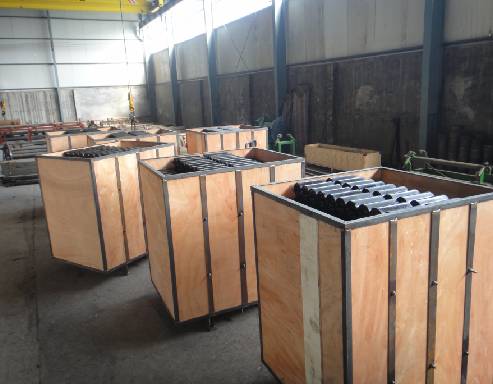 Afrikaans
Afrikaans  Albanian
Albanian  Amharic
Amharic  Arabic
Arabic  Armenian
Armenian  Azerbaijani
Azerbaijani  Basque
Basque  Belarusian
Belarusian  Bengali
Bengali  Bosnian
Bosnian  Bulgarian
Bulgarian  Catalan
Catalan  Cebuano
Cebuano  Corsican
Corsican  Croatian
Croatian  Czech
Czech  Danish
Danish  Dutch
Dutch  English
English  Esperanto
Esperanto  Estonian
Estonian  Finnish
Finnish  French
French  Frisian
Frisian  Galician
Galician  Georgian
Georgian  German
German  Greek
Greek  Gujarati
Gujarati  Haitian Creole
Haitian Creole  hausa
hausa  hawaiian
hawaiian  Hebrew
Hebrew  Hindi
Hindi  Miao
Miao  Hungarian
Hungarian  Icelandic
Icelandic  igbo
igbo  Indonesian
Indonesian  irish
irish  Italian
Italian  Japanese
Japanese  Javanese
Javanese  Kannada
Kannada  kazakh
kazakh  Khmer
Khmer  Rwandese
Rwandese  Korean
Korean  Kurdish
Kurdish  Kyrgyz
Kyrgyz  Lao
Lao  Latin
Latin  Latvian
Latvian  Lithuanian
Lithuanian  Luxembourgish
Luxembourgish  Macedonian
Macedonian  Malgashi
Malgashi  Malay
Malay  Malayalam
Malayalam  Maltese
Maltese  Maori
Maori  Marathi
Marathi  Mongolian
Mongolian  Myanmar
Myanmar  Nepali
Nepali  Norwegian
Norwegian  Norwegian
Norwegian  Occitan
Occitan  Pashto
Pashto  Persian
Persian  Polish
Polish  Portuguese
Portuguese  Punjabi
Punjabi  Romanian
Romanian  Russian
Russian  Samoan
Samoan  Scottish Gaelic
Scottish Gaelic  Serbian
Serbian  Sesotho
Sesotho  Shona
Shona  Sindhi
Sindhi  Sinhala
Sinhala  Slovak
Slovak  Slovenian
Slovenian  Somali
Somali  Spanish
Spanish  Sundanese
Sundanese  Swahili
Swahili  Swedish
Swedish  Tagalog
Tagalog  Tajik
Tajik  Tamil
Tamil  Tatar
Tatar  Telugu
Telugu  Thai
Thai  Turkish
Turkish  Turkmen
Turkmen  Ukrainian
Ukrainian  Urdu
Urdu  Uighur
Uighur  Uzbek
Uzbek  Vietnamese
Vietnamese  Welsh
Welsh  Bantu
Bantu  Yiddish
Yiddish  Yoruba
Yoruba  Zulu
Zulu Durable Wing Pulley Designed for Heavy-Duty Applications and Enhanced Performance in Various Industries
The Importance of Heavy Duty Wing Pulleys in Industrial Applications
In various industrial applications, particularly in the fields of construction, mining, and manufacturing, the efficiency and reliability of material handling systems are crucial. One component that plays a significant role in these systems is the heavy duty wing pulley. This article delves into the design, applications, and advantages of heavy duty wing pulleys, illustrating why they are indispensable in today's industry.
Understanding Heavy Duty Wing Pulleys
Heavy duty wing pulleys are specifically engineered pulleys that are part of a conveyor system. Unlike standard pulleys, wing pulleys feature blades or wings that extend outward from the main body. These wings are designed to efficiently reject material that may cling to the pulley during operation, minimizing carryback—material that sticks to the pulley and negatively affects the system's performance. Constructed from robust materials, heavy duty wing pulleys can withstand harsh environments and heavy loads, making them ideal for demanding industrial applications.
Applications in Industry
Heavy duty wing pulleys are utilized in a myriad of applications across different sectors. In the mining industry, for instance, they are vital in the movement of heavy ores and minerals over long distances. The rugged design and capability of these pulleys to handle increased wear and tear make them suitable for such challenging environments. Similarly, in construction, heavy duty wing pulleys efficiently transport materials like sand, gravel, and concrete mix, ensuring timely project completion.
Manufacturing systems also benefit from these pulleys as they are integral to assembly lines and material transport systems. The ability of wing pulleys to reduce maintenance costs associated with carryback and material buildup is a significant advantage. This reliability translates into smoother operations, less downtime, and ultimately, higher productivity.
heavy duty wing pulley

Advantages of Heavy Duty Wing Pulleys
The primary advantage of using heavy duty wing pulleys lies in their enhanced performance and durability. The wing design minimizes the risk of material build-up, reducing the frequency of maintenance interventions and cleaning. This ensures that conveyor systems run smoothly, contributing to operational efficiency and safety.
In addition to their operational benefits, heavy duty wing pulleys also contribute to cost savings over time. By minimizing the wear and tear on conveyor systems and reducing the energy required to move materials, these pulleys help lower operational costs. Furthermore, the robust construction of heavy duty wing pulleys means they have a longer lifespan, which reduces the frequency of replacement and the associated costs.
Another important benefit is their adaptability. Heavy duty wing pulleys come in various sizes and specifications, allowing them to be tailored to meet the specific demands of diverse applications. This versatility ensures that industries can rely on them to handle various materials, including abrasive substances that can cause damage to standard pulleys.
Conclusion
In conclusion, heavy duty wing pulleys are essential components of modern industrial operations. Their innovative design and robust construction make them capable of handling the intense demands of various sectors, including mining, construction, and manufacturing. With their ability to reduce carryback, lower maintenance needs, and improve operational efficiency, heavy duty wing pulleys offer significant advantages that contribute to enhanced productivity and cost-effectiveness. As industries continue to evolve and expand, the importance of reliable components like heavy duty wing pulleys will only grow, reinforcing their pivotal role in the industrial landscape.
-
Revolutionizing Conveyor Reliability with Advanced Rubber Lagging PulleysNewsJul.22,2025
-
Powering Precision and Durability with Expert Manufacturers of Conveyor ComponentsNewsJul.22,2025
-
Optimizing Conveyor Systems with Advanced Conveyor AccessoriesNewsJul.22,2025
-
Maximize Conveyor Efficiency with Quality Conveyor Idler PulleysNewsJul.22,2025
-
Future-Proof Your Conveyor System with High-Performance Polyurethane RollerNewsJul.22,2025
-
Driving Efficiency Forward with Quality Idlers and RollersNewsJul.22,2025





























